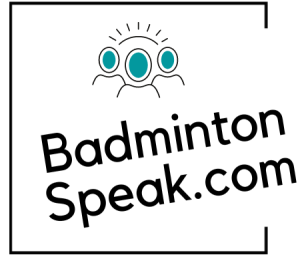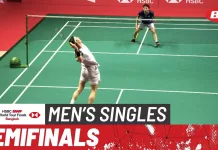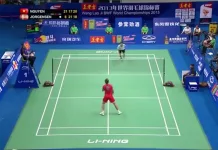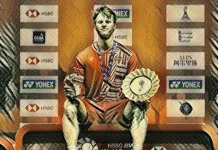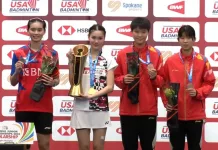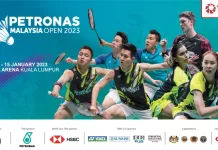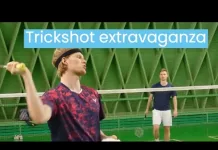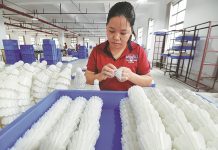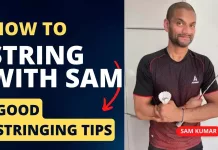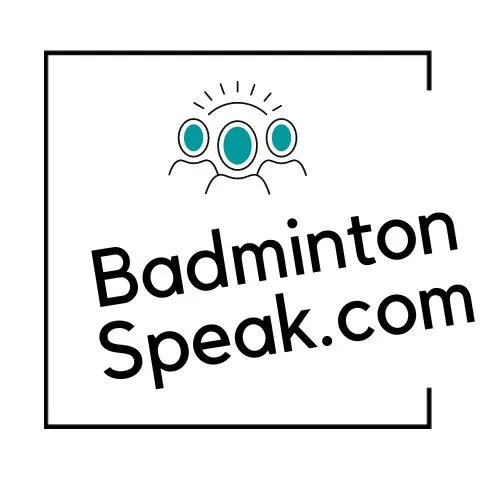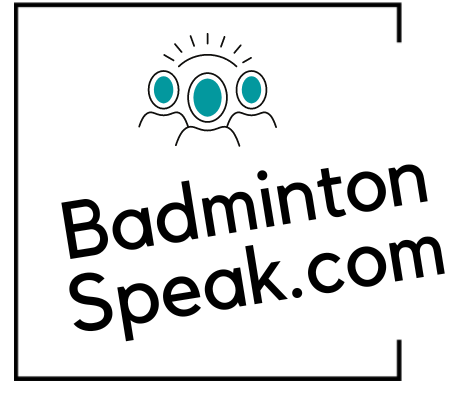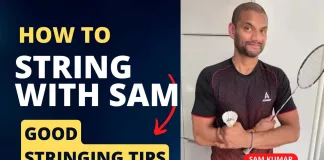
How to choose a shuttlecock for badminton?
There are many different types of shuttlecocks ranging from different materials, and different grades even for different conditions. The many options can make it very confusing to know which shuttles to choose. So this is our full breakdown of the different types of shuttles and how you can choose the right shuttlecock for you!
First up: Shuttlecock Material
The first big difference in shuttlecocks is the material used. This is generally split into 3 categories: Feather, Hybrid, and Synthetics.
Synthetic Shuttlecocks
Synthetic Shuttlecocks are the most popular type of shuttle for beginners and recreational players. They are characterised by a synthetic material, normally nylon, to create the skirt of the shuttlecock. This is molded into a netting or webbed shape. These shuttles are durable and last for multiple games without any damage which is especially useful for players learning the sport.
🧠 Did you know? Synthetic shuttlecocks need to use a netting style with holes as Nylon is a heavy material. If the skirt was solid with no holes it would be too heavy and drop too quickly. So tiny holes are added to the skirt to allow air to pass through making the trajectory more similar to a traditional feather shuttle.
What are the pros and cons of the Synthetic shuttles?
Pros
- Synthetic shuttles are generally much cheaper.
- They are more durable and difficult to break. You can play multiple matches with the same shuttlecock.
Cons
- Synthetic shuttles are slower and require more effort to hit with power.
- It is much harder to play more technical shots like slices.
- They are less stable and predictable making it harder to play precise shots.
Who should use synthetic shuttles? This type of shuttle is very effective for players who are learning. Players that use fundamental badminton shots, clears, smashes, drop shots, net shots, drives, and block defense. It’s also a great option for players who play recreationally with friends and don’t want to spend too much money.

Feather Shuttlecocks
Feather Shuttlecocks are the traditional shuttles used since the very start of the sport (Check out our article on the history of the shuttlecock). They are characterised by 16 feathers from a goose or duck.
Feather shuttlecocks use processed feathers from birds to create the skirt of the shuttle. The ‘quill’ of the feather is inserted and glued to the base of the shuttle. These types of shuttlecocks are used at the competitive and professional levels of badminton in every country.
🧠 Did you know!? (Is it true?) Feather shuttlecocks only use feathers from the left wing of the bird… why? Aerodynamics! The feathers from the left wing of the bird are said to fly more consistently and spin in the same way due to the contours and curvature of the feathers. According to Satoshi Yuza, a Yonex promotion manager.
You can see how a feather shuttlecock is made in our article ‘how shuttlecocks are made’.
It is generally understood that the goose feathers are the premium version of the feather shuttle with duck and chicken feathers being less durable and generally lower quality. Some lower quality or grade shuttles use feathers from all over the bird and then form them into the shape of a left-wing feather. These feather shuttles do not fly as well and are generally less durable.
What are the pros and cons of the feather shuttles?
Pros
- These shuttles are more sensitive to the player’s shots making them more precise.
- It is easier to play more technical shots with them.
- They sound much nicer to hit and easier to tell good vs bad hits.
Cons
- Feather shuttles are sensitive to how they are hit. They are harder to play with if you don’t have a good technique which also breaks the shuttle faster.
- Feather shuttles are very fragile and can break after 2-3 points.
- Feather shuttles can be deformed more easily if stored incorrectly.
Who should use feather shuttles? Technical ability is the biggest factor when deciding to use feather shuttles. Technically good players, capable of playing all types of shots, need ‘feel’ or accurate shuttle flight to play advanced skills such as slices, tumbles or backhand clears. They are for players who are playing competitively and need reliable flight for their shots.

Hybrid Shuttlecocks
Hybrid shuttlecocks are a mix of both synthetic material and natural materials. Different brands create hybrid shuttles in slightly different ways with different formulas. For example, Babolat hybrid shuttles have a traditional cork ‘head’, a synthetic Nylon base, and a feather skirt. Victor hybrid shuttles, on the other hand, are made with carbon fiber, this shuttle has a foam-like synthetic feather skirt with a carbon fiber frame and cork composite base. You need to check each hybrid shuttle to see how it has been created.
🧠 Hybrid shuttles only recently started to be developed and available in badminton. The aim is to make a synthetic shuttle that mimics exactly how a feather shuttle performs. Why? To make a cheaper and higher performing shuttlecock.
The badminton community has been split on their view of hybrid shuttles. The purists of badminton want to keep feather shuttles, the original shuttle, and the highest quality of the shuttles to keep the game high quality.
Many club-level players are eager to find a hybrid shuttle that performs more like a feather but at a cheaper price. Both of these groups currently reject hybrid shuttles and haven’t adopted them into the game on a large scale, however, innovation is continuing with better quality hybrid shuttles coming to market.
What are the pros and cons of hybrid shuttles?
There is not a straight answer to this as every hybrid shuttlecock is very different. If you are looking for the play style of a feather shuttle for the cost of a synthetic then you should try some of the newest hybrid shuttles. If you want to be ahead of the curve you should keep an eye out and try new hybrid shuttles that come out.
We will have a review of some hybrid shuttles coming soon. You should join our mailing list so you are notified when it happens!

Second: The Base
It’s not only the skirt that can be a different material. The base or ‘head’ of the shuttlecock that is hit can also be different materials.
Most bases are made from cork material, however, this is not the full story as you can have composite cork or natural cork. Natural cork is one piece of cork cut to the right size, shape, and weight for each shuttle. This makes the weight consistent and the cork more durable as it is one piece.
Composite cork is a mixture of natural cork and synthetic cork which deteriorates quicker than natural cork as it’s not one piece. The composite is a cheaper option which is used in the budget option shuttles.
The Base cover
You might also see the white covering on shuttles. It’s the same for every type of shuttle, right? No! Again you have options. This is important as it is the only part of the shuttle that contacts the strings of a racket. Traditionally shuttles were covered in different types of leather which combine with the cork and propel the shuttle over the net. We do still see this used today with sheep membrane/skin used for some shuttles. However most shuttle types use a rubber covering for the head of the shuttle, this is a good option as it adds more propulsion to the shuttle as rubber is generally more elastic.
Third: Shuttle grades
Feather shuttles have an added complexity as, unlike hybrid or synthetic shuttles, there are different grades of shuttles. The grade of the shuttle is a way of categorising the quality of shuttles which is why only feather shuttles have this. Feather shuttles can vary massively in their quality due to the feathers and manufacturing whereas hybrids and synthetics can be standardised much more easily.
So what determines shuttle grade?
The main factors that affect shuttle grading are durability, consistency, and flight trajectory.
As you can see in our ‘How shuttlecocks are made article‘, the feathers used for shuttlecocks are graded and categorised before they are made into shuttles. In this way, the best feathers are made into the best shuttles by combining them with the best bases, with the lower grades of feathers having lower grades of base.
The shuttles are tested again after manufacturing for flight speed and quality. The best quality shuttles should fly very consistently with a near-perfect flight trajectory and arc numerous times. The shuttles will also be more resistant to damage.
So now we know what grades are, it’s simple, right? You would think so but not really. Every brand of shuttle manufacturer has its grading system and categories. So you need to check each badminton brand for their grading system. A good general rule is the most expensive shuttles are the best quality.
| Rank | Yonex | Victor | Li-Ning | RSL | Babolat |
| Top | Aerosensa 50 | Master Ace | G900 | Ultimate | Babolat 1 |
| Aerosensa 40 | Gold Champion | G800 | Supreme | Babolat 2 | |
| Aerosensa 30 | Service | G700 | Classic Tourney | Babolat 3 | |
| Aerosensa 20 | Champion No.1 | G600 | NO.1 Tourney | Babolat 4 | |
| Aerosensa 10 | Gold Maxima | G500 | NO.2 Tourney | Challenge | |
| Bottom | Auroclub Tour | Queen | G60 | NO.3 Tourney |
Get more pertinent badminton tips and knowledge
Smart people want to stay ahead of the information curve. This is true for badminton fans as well. So, go on, and subscribe to the free badminton newsletter here.
- When will Vietnam produce more top badminton players? - August 3, 2024
- What is a shuttlecock? - June 20, 2024
- Which shuttlecock should I use? - June 18, 2024
